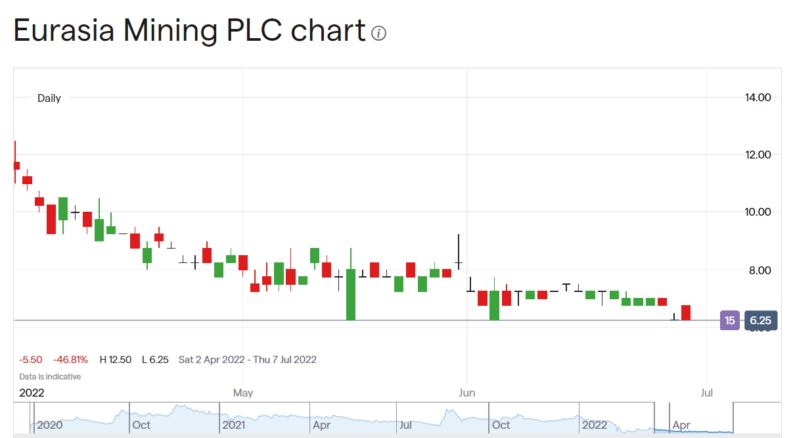
Key points:
- Eurasia Mining continues to advance its various projects
- Internally the company seems to be operating just as we might hope
- It's the political risk which is the real determinant of the share price at Eurasia
Eurasia Mining (LON: EUA) shares are up 5% this morning on the announcement of annual results. The basic result is that losses continue around the £3 million mark, similar to last year, but then this is normal enough for a company at this stage of mine development. That works out to a loss of 0.11 p per share, again not unusual at this stage of development.
In terms of ongoing activity Eurasia Mining is about where we might think it should be. They've identified useful pgm (platinum group metals) and copper and nickel deposits in Russia. They're advancing their exploitation usefully. They're doing to right sort of things like replacing diesel power with grid based (and green, hydro) power and so on.
Whether or not those pgms and EV metals are going to be caught up in a future commodity supercycle is something that all miners in this field face as an open question. So there's no difference between Eurasia and comparators there.

Also Read: Alternatives To Major Russian Stocks
So, if Eurasia is advancing their projects, the particular markets they're servicing look good enough, why is the share price down 80% from its peak last autumn? That, obviously, is to do with Ukraine and sanctions on Russia. As with other miners in Russia this is a potential problem rather than necessarily an actual one. Petropavlovsk (LON: POG) could be driven into administration or a forced sale because their bank is directly sanctioned. Polymetal (LON: POLY) seems to be threading through the varied sanctions and suffering only from the wider economic implications of inflation and interest rates. So, what happens with sanctions is in fact vital to a Russia based miner. As Eurasia says, they're breaching none of the sanctions regulations, no one connected to the firm is directly sanctioned, so far so good that is.
The vital question to a valuation of Eurasia Mining shares is whether this situation will persist. That is, will they continue to be operating fully in compliance with all sanctions and other laws? At which point we've got to take a view.
It seems clear enough that the end of the current disruptions will lead to a significant revaluation at Eurasia Mining, as it will other companies operating in Russia. What matters is what happens between now and then. Will the Russian state continue to leave mining concessions in foreign hands? Will there be another round of sanctions on pgms and battery metals? More sanctions might seem unlikely and might even have little effect – the bans on new gold sales haven't made much difference simply because Russian ingot already wasn't good delivery to either the London or Chicago markets anyway.
But this is the calculation that has to be made over any trading position in Eurasia Mining. This annual report shows that they continue to operate in much the manner we thought they were. The drop in valuation is entirely about that political risk – so, when will that end and what will happen when it does?




